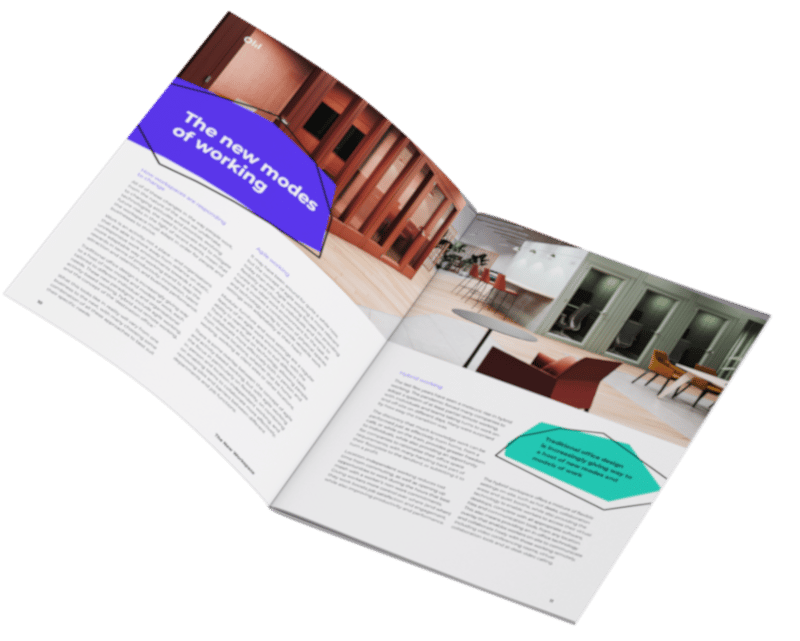If you’re considering transforming your office, there are a few various key terms that you’ll need to wrap your head around first. The terms explained in this guide are ‘office fit out’ and ‘office refurbishment’. To those unfamiliar with the interior design and construction industry, the two phrases might seem to mean exactly the same thing. It’s easy to get the two confused, however they do refer to very different processes. Here’s a simple breakdown to begin with. An office fit out is where you begin with only the core structural elements of a room or building in place. So, you’re left with the responsibility of installing everything that will help make the space suitable for working in. Office refurbishment, on the other hand, is where the office fit out has already been suitably carried out to a high standard. All necessary elements such as lighting, ceiling and flooring, lift facilities, toilets and maintenance systems have already been put into place. Office refurbishment is where you may have already had an office, however it’s become outdated and needs a bit of a refresh. So, you refurb the area by changing up the furniture, carpeting and décor. While that short explanation has given an overview of the differences between office fit out and office refurbishment, you may still be left with some questions. Luckily, we’re here to help you differentiate between the two. So, we’ll explain what an office fit out is, and what office refurbishment is in detail below.
What is Office Fit Out?
Office fit out is where designers, tradespeople and contractors are starting out with the task of making an empty space habitable or suitable for work. So, say for example, your business has just acquired a new office within an entirely new building. You can’t simply go in and begin working straight away, as it would be unsafe to do so. There are 3 different types of office fit out, each explaining the level of finish the room or building already has. The first, most intensive type of office fit out is called ‘shell and core.’ This is where there is nothing yet installed, and you basically have only the concrete structure of the office so far. You’ll then need to install everything from the ground up. Category A office fit out is where basic necessities have already been installed in the shell and core stage. These might include electrical work and basic safety measures. So you’ll now have to install the rest of the mechanics and electrics, like lighting fixtures, ceilings and flooring. Category B fit out is where people often get a little confused, as Category B is the stage very similar to office refurbishment. Cat B essentially refers to when the entire fit out process is complete, and interior designers are left with a blank canvas from which to design the office from. This is when furniture is brought in, décor is added and space utilisation techniques are considered. Cat B fit outs are still considered to be part of the fit out process, despite similarities with office refurbishment. This is because the space was not already filled with furnishings and décor – it’s a blank space. Refurbishment means the office was already fully fitted out and designed with furniture.
Different Tasks Office Fit Out Might Entail:
Depending on the level of finish already given to the space you’re fitting out, you’ll have different projects to undertake in order to make that space suitable for work. Here are a few of the various tasks that contractors and builders may have to finish when fitting out a brand new space: • Electrical work • Lighting fixtures • Plastering • Partitions (Drywall Partitions, Glass Partitions) _Glass Partitions/Office Partitions could be part of our keywords • Planning meeting rooms, break areas • Toilet facilities • Fire systems • Air conditioning • Lift installation • Audio Visual • Plants • Feature Walls • Checking stairways and corridors are fit for purpose • Installing suspended ceilings • Raising flooring • Flooring finishes • Hot Points (beverage stations) • Fitted Furniture • Loose Furniture
What Is Office Refurbishment?
As we discussed above, office refurbishment involves redesigning and decorating an office that has already been previously designed. It may have been decorated a decade ago when the office first underwent the office fit out – the decorating stage of the fit out process is the Category B fit out. Let’s say this office was decorated in the initial Category B fit out a decade ago. Within that time, different design trends have come and gone, and innovations have altered the way we design new offices today. You and your employees may now feel that your office is becoming increasingly outdated, in terms of both style and technology. So, what can you do? This is where the idea of office refurbishment comes in. You want to rejuvenate your office, getting rid of the old furniture that has seen better days and is now damaged or unsafe. You might also be losing money due to the outdated way your office was designed. We now have a much greater understanding of how space utilisation techniques, for example, can save you time and money in the office.
What Does Office Refurbishment Involve
The extent to which your office can be redesigned depends on your individual workspace’s goals, efficiency of the previous design or furniture, and your overall budget. Those with a smaller budget may opt for only the most essential updates, such as replacing broken furniture. However, if you’d like a complete office overhaul, it’s better to start from a blank canvas again – remove all the furniture, tear down the décor, and repaint from scratch. Here’s a list of various things office refurbishment involves: • Removing and discarding of previous furniture • Re-upholstering worn furniture where necessary • Stripping paint, wallpaper, removing carpets • Designing a renewed office space and layout with the help of office refurbishment specialists • Considering space utilisation techniques to save money – is the layout of desks limiting movement around the office, wasting time? • Painting and decorating to suit the new interior design ideas • Installing new flooring designs, such as wooden panels or carpeting • Considering new furniture options – these can be ergonomic, more innovative or suited to particular members of staff • Renewing areas such as toilets, staff areas and break rooms • Adding those small touches and finishing details that make a big difference – artwork, coffee table reading material, blinds and curtain options
The Differences Between Office Fit Out vs. Office Refurbishment Simplified
Office fit out is the first stage in designing a new room or building. It’s where the builders have already built the bare shell of the space, but it now must be made safe and comfortable. It involves installing electrical systems, floors and ceilings, and the first interior design of the office space and furniture. Office refurbishment comes much later then the initial fit out stage, perhaps many years later. It’s where an entire office has already been fitted out and even Category B fit out has been completed, with furniture and décor. During office refurbishment, the previous office furnishings and décor may be completely removed and stripped down, depending on how extreme you’d like the refurb to be. Alternatively, refurbishment can involve making only small adjustments, like renewing the space with a lick of paint or new ergonomic furniture. Either way, both processes are absolutely essential in providing your employees with a comfortable and inspiring workspace where they can do their best. If you’re looking for an office fit out or office refurbishment specialist – Office Workspace can help you with all your needs. With a dedicated, creative team and years of experience under our belt, we can discuss your office fit out or refurbishment ideas today. Get in touch to see how we can transform your office space.

